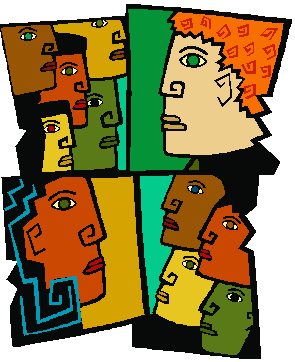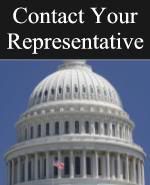Study Released About New Demographic Powerhouse.

Much has been made of Barack Obama's mixed-race heritage. For better or worse, more ink and pixels have been expended during this campaign discussing race than perhaps any other topic. We've seen both overt and covert attempts to appeal to voter's baser instincts by some, and insightful and thought provoking analysis of our emerging multi-racial and multi-cultural nation by others.
Only those living under rock for the past year would not be familiar with Obama's family history. The son of a black father and white mother who married young then divorced, he lived in Indonesia as a child with his stepfather, then returned to Hawaii to be raised by his maternal grandparents.
While it's well know that Obama's father was Kenyan, little is made of the fact that he is the child of an immigrant …. Yet, this makes him part of one of the fastest growing, and politically important demographics in the nation.
Today in California, half of all teens have at least one immigrant parent, and throughout the nation the number of 18-25 year olds who can trace their ancestry in this country back no further than their parents grows daily. Among all Latinos, 40% have immigrant parents, and Asians, 90%.
Obama, in a way, represents the leading edge of a demographic boom of children born of immigrant parents who will continue to come of age far into the future with ramifications politically, socially, and culturally, that could be monumental.
A new study, released today by the Immigration Policy Center, entitled, "The New American Electorate: The Growing Political Power of Immigrants and Their Children", looks not only at the growing power of this demographic, but the vast numbers of newly naturalized citizens, and the Latino and Asian communities from which they come.At a time when federal, state, and local elections are often decided by small voting margins—with candidates frequently locked in ferocious competition for the ballots of those “voting blocs” that might turn the electoral tide in their favor—one large and growing bloc of voters has been consistently overlooked and politically underestimated: New Americans. This group of voters and potential voters includes not only immigrants who have become U.S. citizens (Naturalized Americans), but also the U.S.-born children of immigrants who were raised during the current era of large-scale immigration from Latin America and Asia which began in 1965 (the Post-1965 Children of Immigrants).
These immigrants and their children have a powerful and highly personal connection to the modern immigrant experience that most other Americans do not. It’s one thing to hear family stories about a grandfather or great-grandfather coming to the United States during the much-romanticized “Ellis Island” era of immigration from Europe that ended decades ago. It’s quite another to belong to a family that is experiencing first-hand the political and economic realities of immigration today. The ranks of registered voters who are New Americans, or Latino or Asian, have been growing rapidly this decade and are likely to play an increasingly pivotal role in elections at all levels in the years to come, particularly in battleground states like Florida, Colorado, Nevada, and New Mexico. As recent public opinion polls reveal, anti-immigrant political rhetoric is likely to motivate many New Americans to cast ballots in November, but is unlikely to win many votes for candidates perceived as anti-immigrant.
Link(pdf)
To get some idea of the current size of this population and the growing political potential in holds, one need only look at a few key statistics.
- 7.6 million were Naturalized Americans, accounting for 5.6 percent of registered voters.
- 4.1 million were Post-1965 Children of Immigrants, accounting for 3.0 percent of registered voters.
- 9.3 million Latinos comprised 6.8 percent of registered voters.
- 3.3 million Asians accounted for 2.5 percent of registered voters.
In the past two years, an additional 3 mil new naturalized citizens have become eligible to vote, and conservative estimates put the number of currently registered Latino voters at 11.7 million. Each month, nationally, 40,000 Latino teens turn 18 and become eligible to vote. Obviously, when all these groups with immigrant family ties; New immigrants, their children, Latinos and Asians are looked at on whole, their growing numbers and growing political power makes them a key demographic not only in 2008, but for the future.New Americans (including both naturalized citizens and the children born to immigrants in the United States since 1965), Latinos, and Asians are increasingly important to the outcome of elections at the federal, state, and local level in the United States. Yet immigration and the ongoing racial and ethnic diversification of the American electorate have received relatively little attention from pundits and analysts discussing the 2008 vote and the electoral outlook for future elections. However, as naturalized citizens and their families grow into sizable portions of the electorate, political candidates who fail to recognize the growing importance of New American, Latino, and Asian voters increasingly undermine their own campaigns.
The U.S.-born children of immigrants in particular are increasingly important in the voting booth. These children occupy a unique position in U.S. society in that they have watched one or both of their parents navigate a new society and culture. As a result, they are personally connected to the struggles of immigrants and to the ways in which U.S. society reacts to and treats immigrants. There were nearly four million of these Post-1965 Children of Immigrants registered to vote in 2006.
Immigrants who have become U.S. citizens (Naturalized Americans) and the U.S.-born children of immigrants are closely connected to, and many are a part of, the Latino and Asian communities in the United States. Latinos and Asians include not only immigrants and their children, but also families that have lived here for many generations. In general, Latinos and Asians have a close connection to the immigrant experience because they are immigrants themselves, or their parents were immigrants, or they live in neighborhoods where friends and extended-family members are immigrants.
Apart from sheer growth in their numbers, two key factors are transforming New American, Asian, and Latino voters into a potent electoral force which is changing the nature of elections and political campaigns nationwide.
First, immigrant communities can now be found throughout the United States. No longer concentrated in just a few states like California, Florida, New York, and Texas, immigrants are becoming a sizable portion of the population in states like Nevada, Washington, and North Carolina. Second, contemporary elections are often won by very thin voting margins. In 2004, for example, President Bush carried Ohio by just 119,000 votes, or 2 percent of all registered voters, while Senator John Kerry won Michigan by a margin equaling 3 percent of registered voters.
The combination of wide geographic dispersion and increasingly close elections means that New American, Latino, and Asian voters can play a crucial role in elections taking place in “battleground” states where neither the Democratic Party nor the Republican Party has a decisive edge.
Link(pdf)
“The campaigns, pundits and press have spent this entire election cycle searching for a new and weighty voting bloc." said Angela Kelley, Director of the Immigration Policy Center, speaking on the release of the report. "Their search is over. Step aside Soccer Moms and NASCAR Dads. New Americans are ready to vote. This group has been decades in the making and they are certain to flex their voting muscles this year”
And for any of those with doubts about the pivotal role immigration reform, and how politicians deal with it, plays in motivating this growing and politically active demographic, one simple statistic should end them: In 2006, 45% of all Latino voters between the ages of 18 and 24 either took part in, or had close family members take part in, the large-scale immigration marches that took place throughout the nation. ….Giving new meaning to the slogan, "Today We March – Tomorrow We Vote".
READ COMPLETE STUDY HERE(pdf)
READ MORE about "The New American Electorate: The Growing Political Power of Immigrants and Their Children" from Henry Fernandez at Think Progress
WATCH VIDEO of IPC panel discussion of report on C-Span HERE

































1 comment:
The big failure of the GOP is evident in the loss of Latino voters in the last four years. Where Bush carried 45% (if I recall correctly) of the Latino vote, McCain will surely not this year. Considering McCain is at least as Latino-friendly as Bush was (okay, so they aren't doing pro-immigration marches, but let's be realistic), it's ironic that he will be suffering the effects of the rank-and-file Republicans' ugly rhetoric and views on immigration. It's a miracle he was nominated at all, considering how strongly he fought against his own party on the issue - and as far as Latino votes go, it won't have helped him at all. Then again, he doesn't do stuff "for votes," or he'd have gone the way of Tancredo and others long ago.
It's no mystery to me why McCain's down in the polls in NM, CO, NV, and even somewhat in Arizona. He has an unwinnable position (w/r/t elections) on immigration - too "soft" for most Republicans, and he's got the (R) by his name, which means he loses Latino votes. And of course, he won't get votes from Democratic partisans, regardless of race or his work with Sen. Kennedy and others on immigration.
And in case you're wondering, I am a conservative Republican. I'm *very* bitter about what my fellow conservatives have done with immigration and how it's adversely affected our chances for winning tomorrow; if McCain loses, it'll be on the hands of anti-immigration zealots. They'll say he loses because he's "too liberal," but they'll have it exactly backwards.
Post a Comment